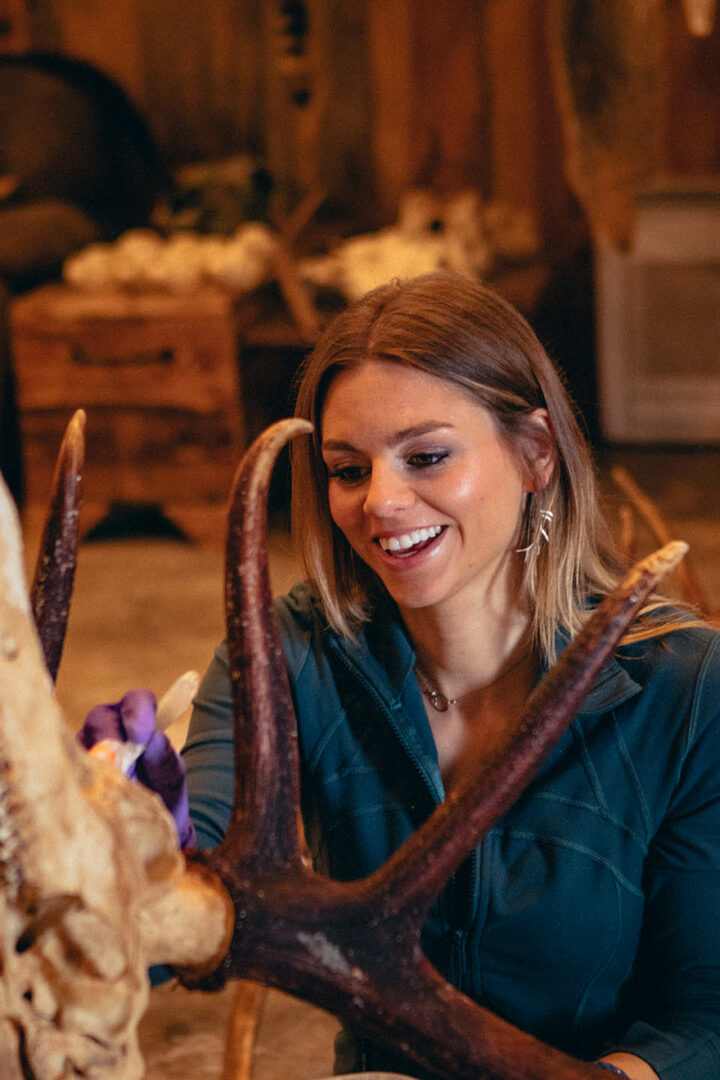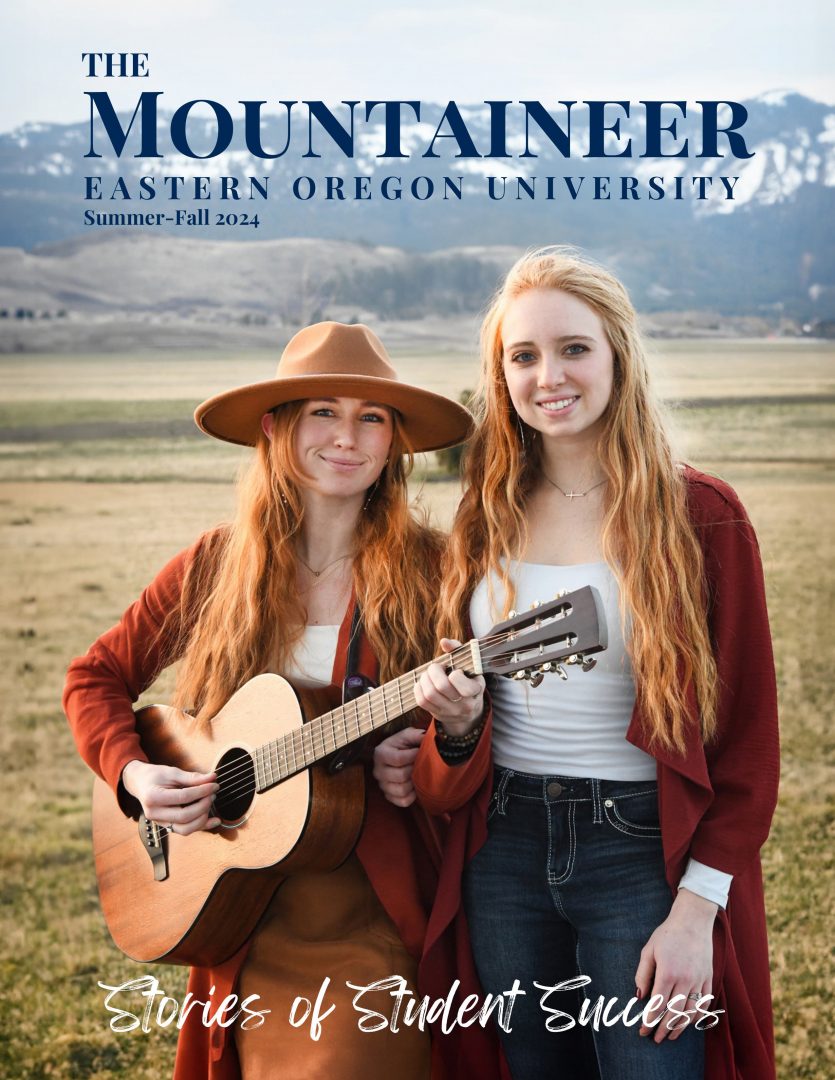Coyotes, badgers and bears, oh my!
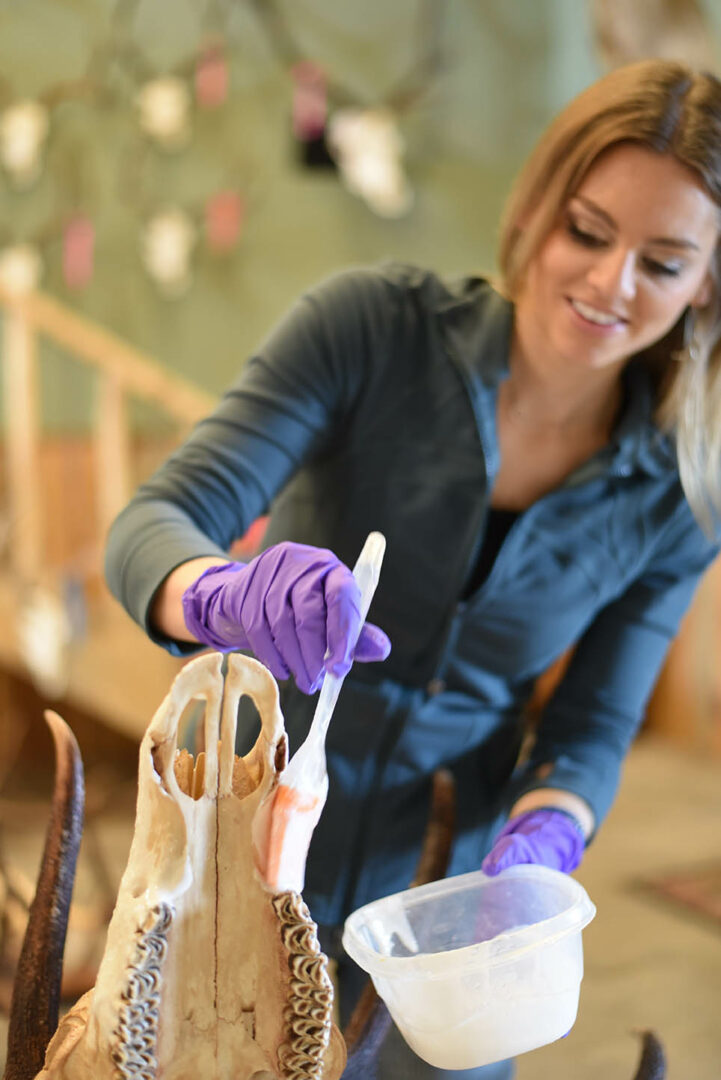
First, someone brings her the head of an animal. It might be skinned or not, sometimes it’s half-rotten. She cuts out the soft tissue, that’s the eyes, tongue, brain and any other meat still attached to the bone.
Then the dermestid beetles get it. A fast moving colony of hundreds of thousands of insects gnaw away every last shred of tissue. Next is the challenging, time-consuming and expensive part. She plunges the skull into a hot, soapy bath, where it degreases for weeks, or even months, until the suds have sucked out all of its natural greasiness.
Finally, the clean, dry skull gets a whitening treatment and a coat of clear sealant. It’s been about two months, at least, for a typical animal, but much longer for a greasy animal such as a grizzly bear.
Lauren Hull, who graduated from EOU in 2011, uses creative problem-solving skills from her art degree to transform cows, buffalo, elk, deer, bear, dogs, cats, wolverines, skunks, weasels, badgers, foxes, wildebeest, antelope, monkeys, coyotes, moose and much more into European mounts.
From her studio in Alicel, Oregon, she cleans hundreds of skulls every year. Hull’s Skulls counts hunters and trappers among its clientele, as well as Western decor enthusiasts and taxidermists. Sometimes people even bring her their deceased pets.
Her skill set has developed over the last nine years, and she experiments with different chemical concoctions during her slow season to further refine her process. This scientific approach melds well with her artistic background, Hull said.
“People like to joke about how I would never put my art degree to good use, but I use it all the time!” she said. “Sometimes I get skulls that I need to completely reconstruct, or antlers that I need to graft seamlessly onto skulls. I also have to articulate entire skeletons and create missing pieces. Every season I encounter several problems that I have to use my artistic mind to fix.”
Plus, she gets a lot of requests for her hand-painted pieces. Hull’s distinct style features geometric designs, bold colors and Swarovski Crystals.
She cleans and paints the skulls in a converted barn on her family’s ranch that she renovated as a studio space, while her big black lab watches from a comfy couch. The walls are lined with tiny, white skulls, all eye sockets and toothy grins. A one-of-a-kind chandelier made of 300 coyote skulls hangs overhead.
As a senior art student at EOU, Hull purchased her first beetle colony to clean the fine bones of small animal skeletons, which she carefully re-constructed to look like dragons and other impossible creatures. During her senior exhibition, a taxidermist recognized the technique of using dermestid beetles and skeletal articulations, and approached her about additional work. Her beetles have rarely been bored since.
“My location has really allowed me to thrive,” Hull said. “I get skulls shipped to me from all over the U.S., but Eastern Oregon really is the prime location. Nearly my entire customer base has come from word-of-mouth referrals because the hunting community is so tight-knit. One of the best parts of my job is meeting people from the community and forming lasting relationships.”
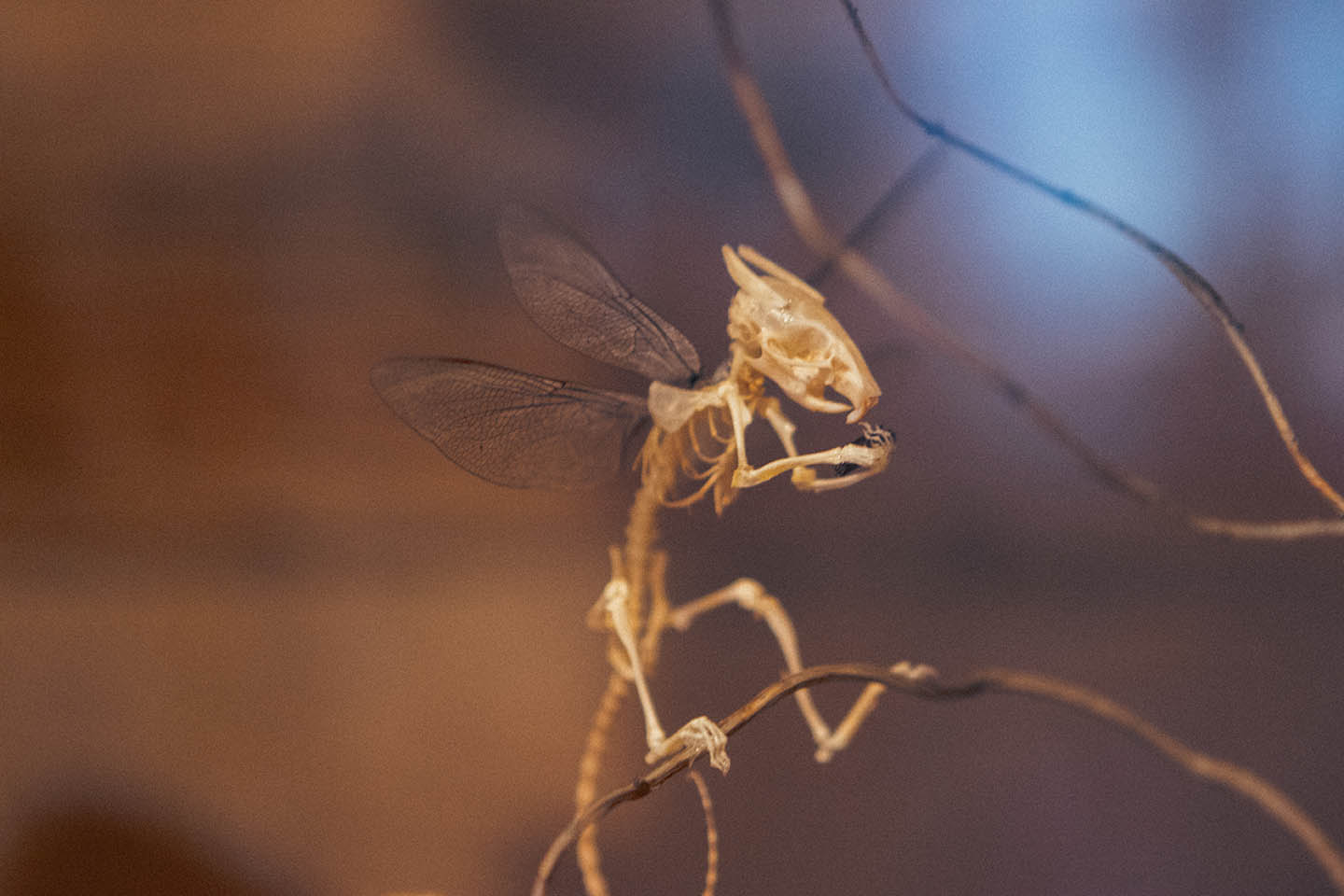
Hull pieced together tiny skeletons to create fantastical creatures for her senior art exhibition. 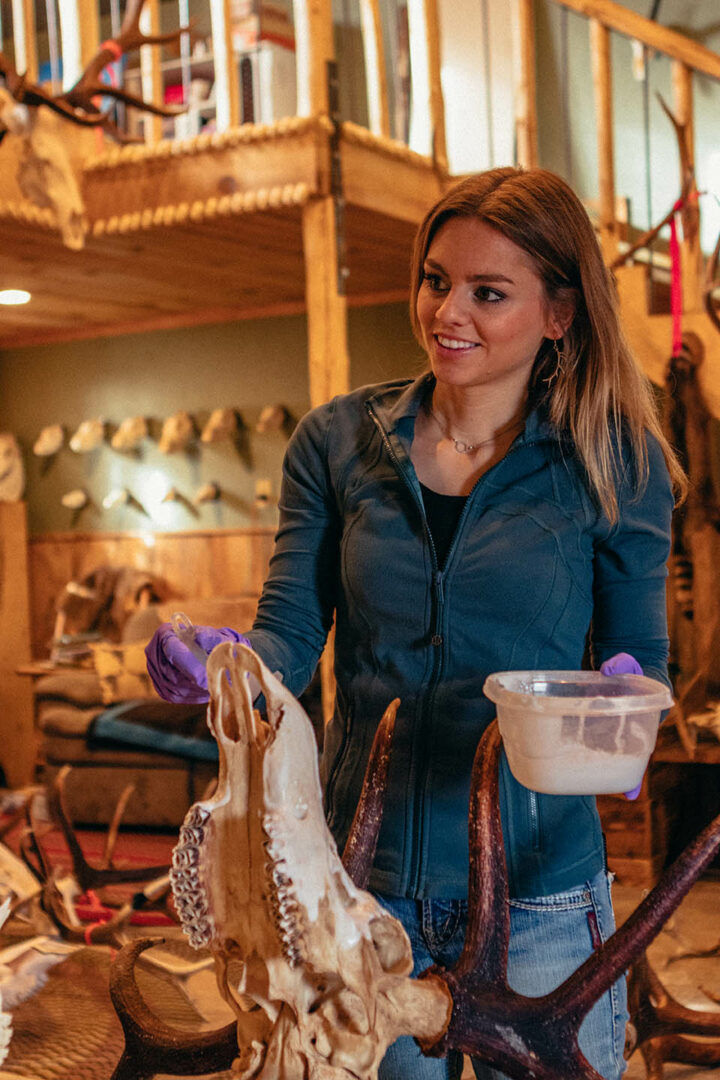
Hull bleaches an elk skull in her studio. 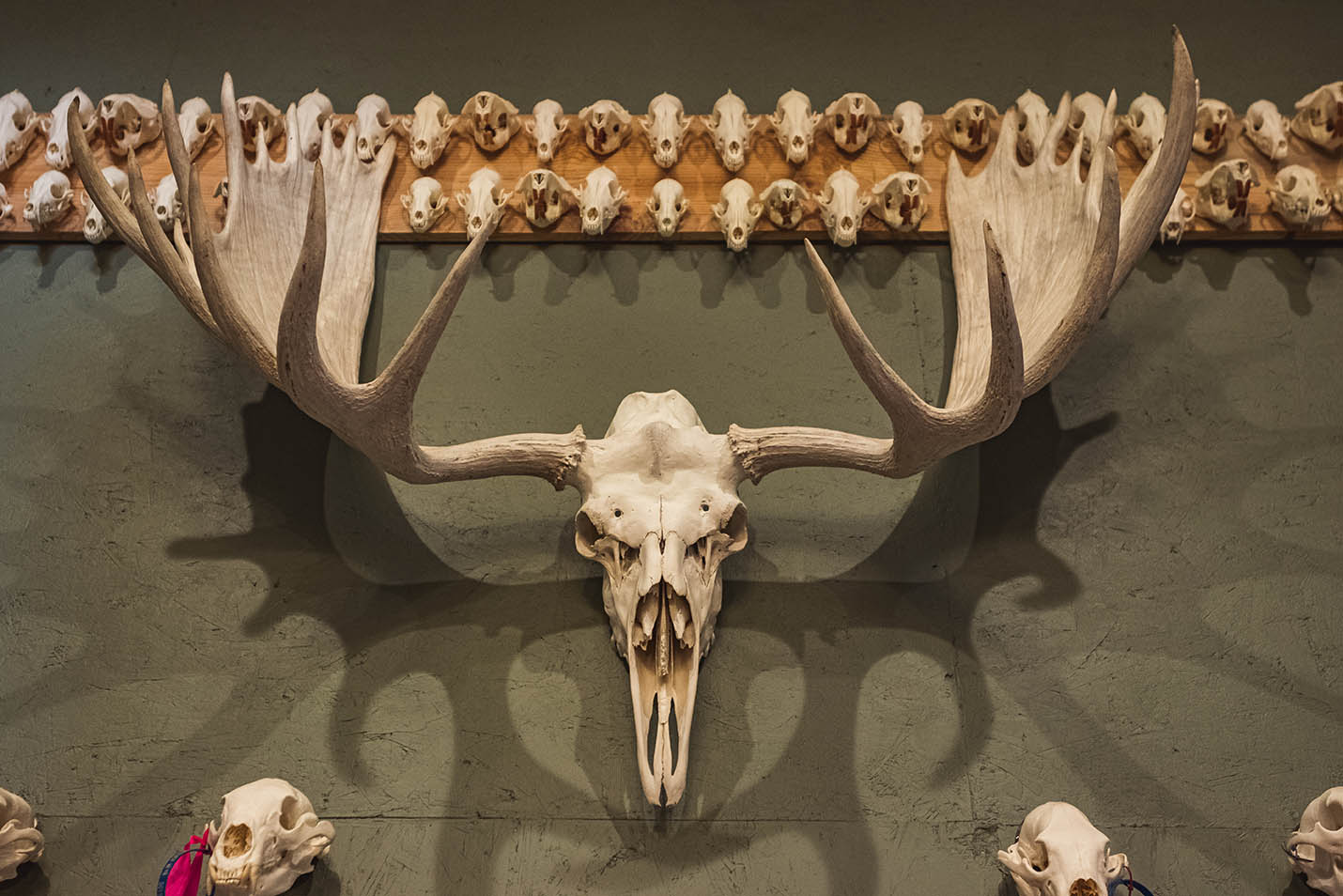
A moose skull casts a broad shadow beneath rows of smaller onlookers. 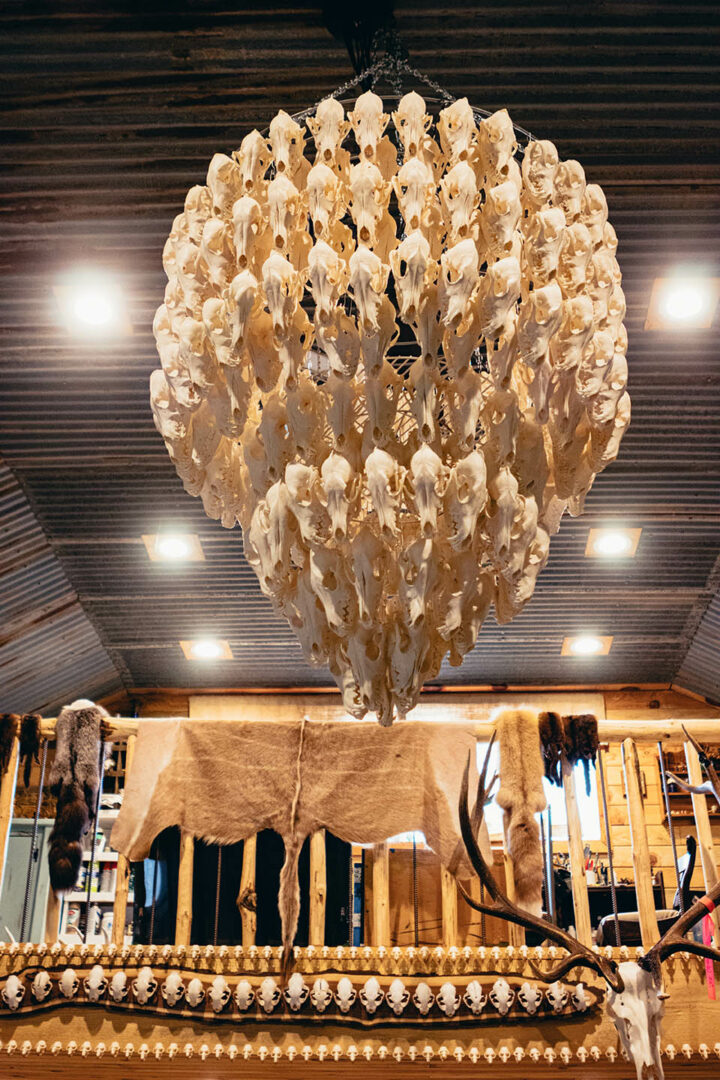
It took months for Hull and two helpers to construct the coyote skull chandelier in her studio. 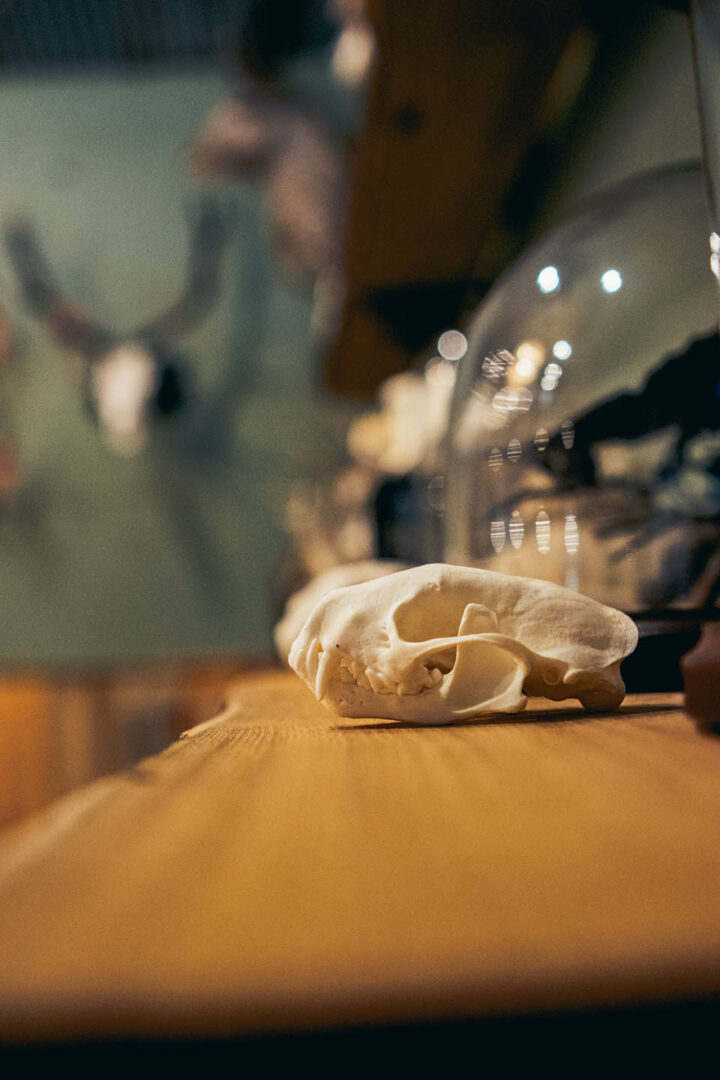
The studio is lined with shelves of blank skulls with their toothy grins. 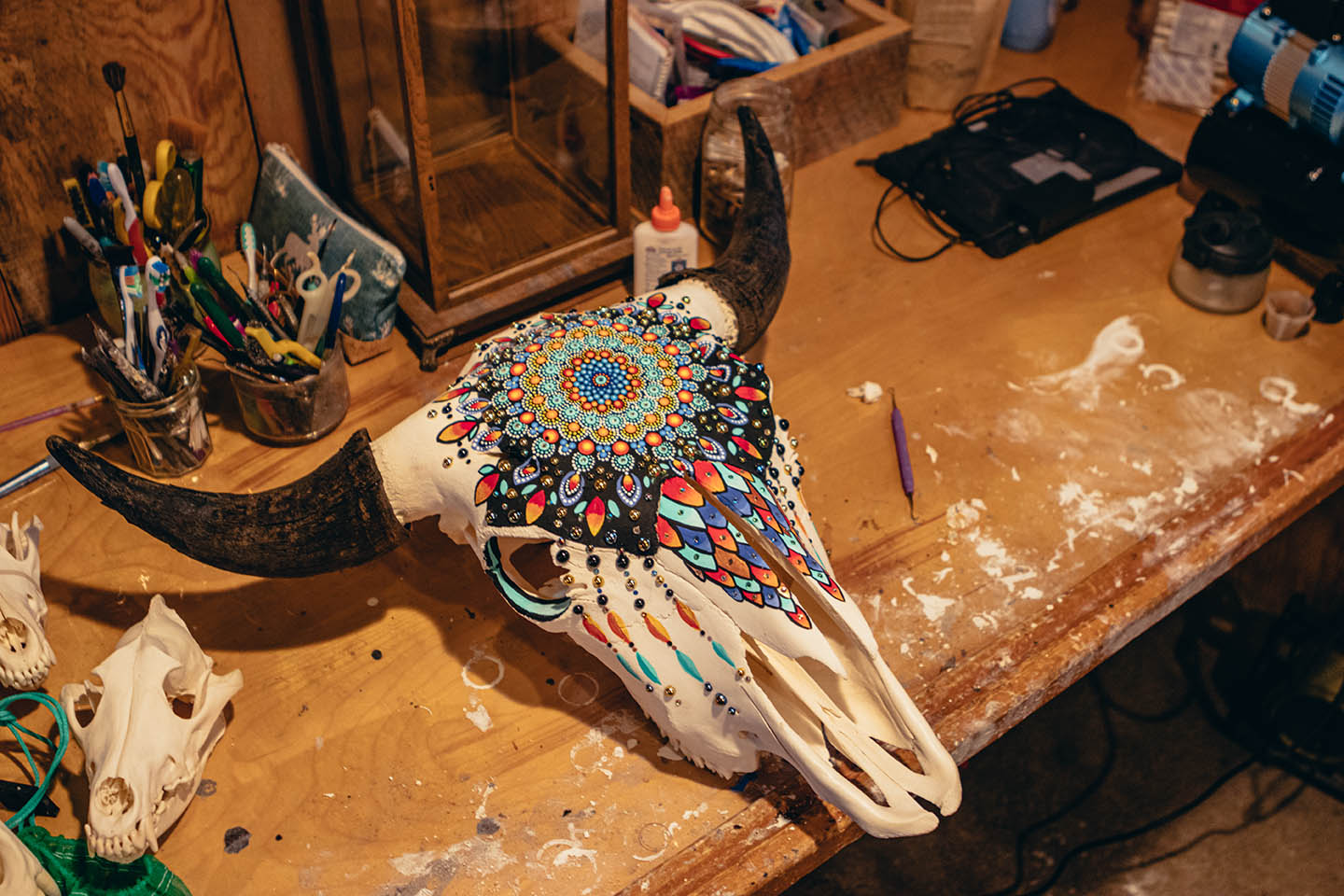
This buffalo skull showcases Hull’s distinct style of bright colors, geometric patterns and plenty of bling. 